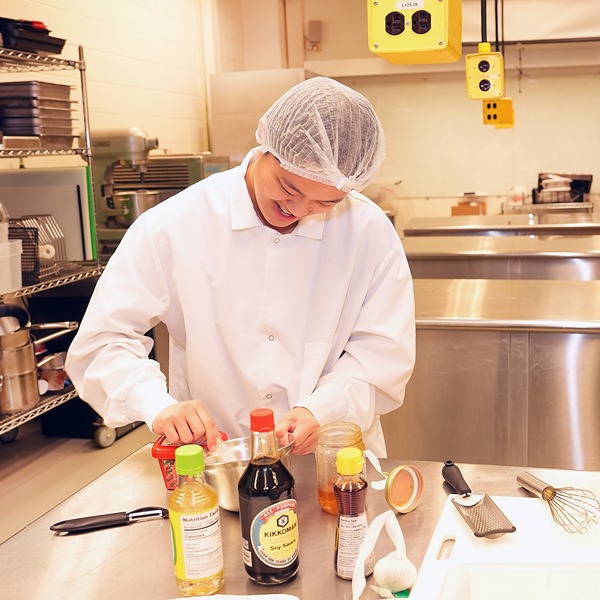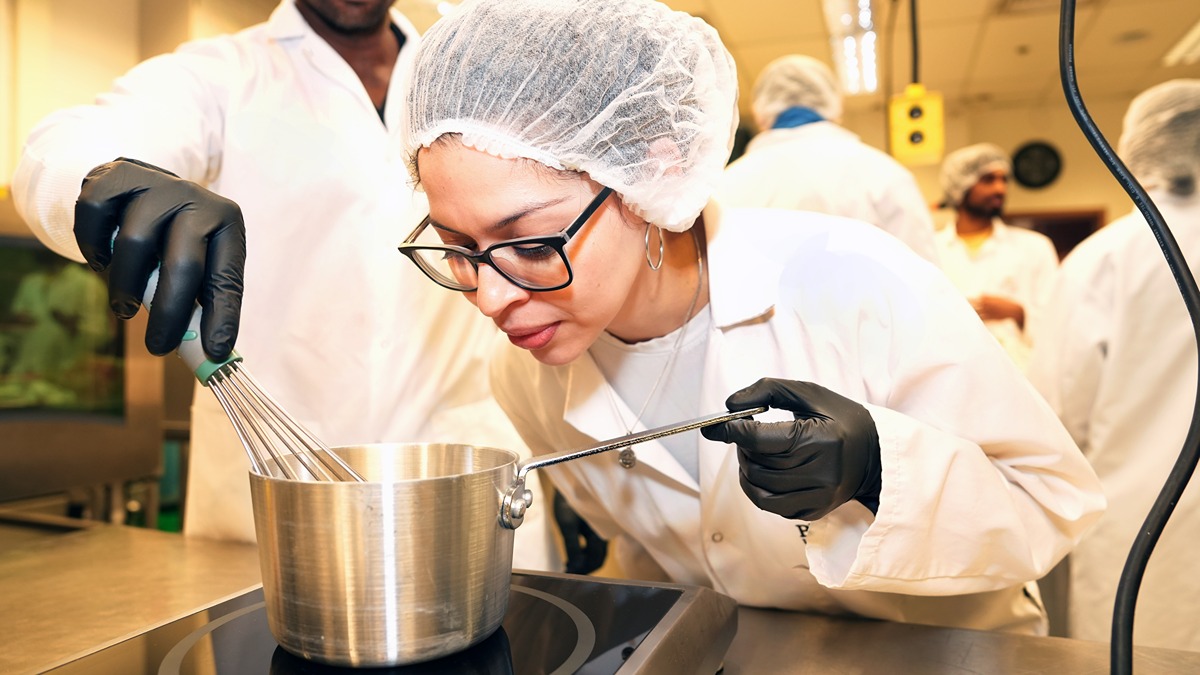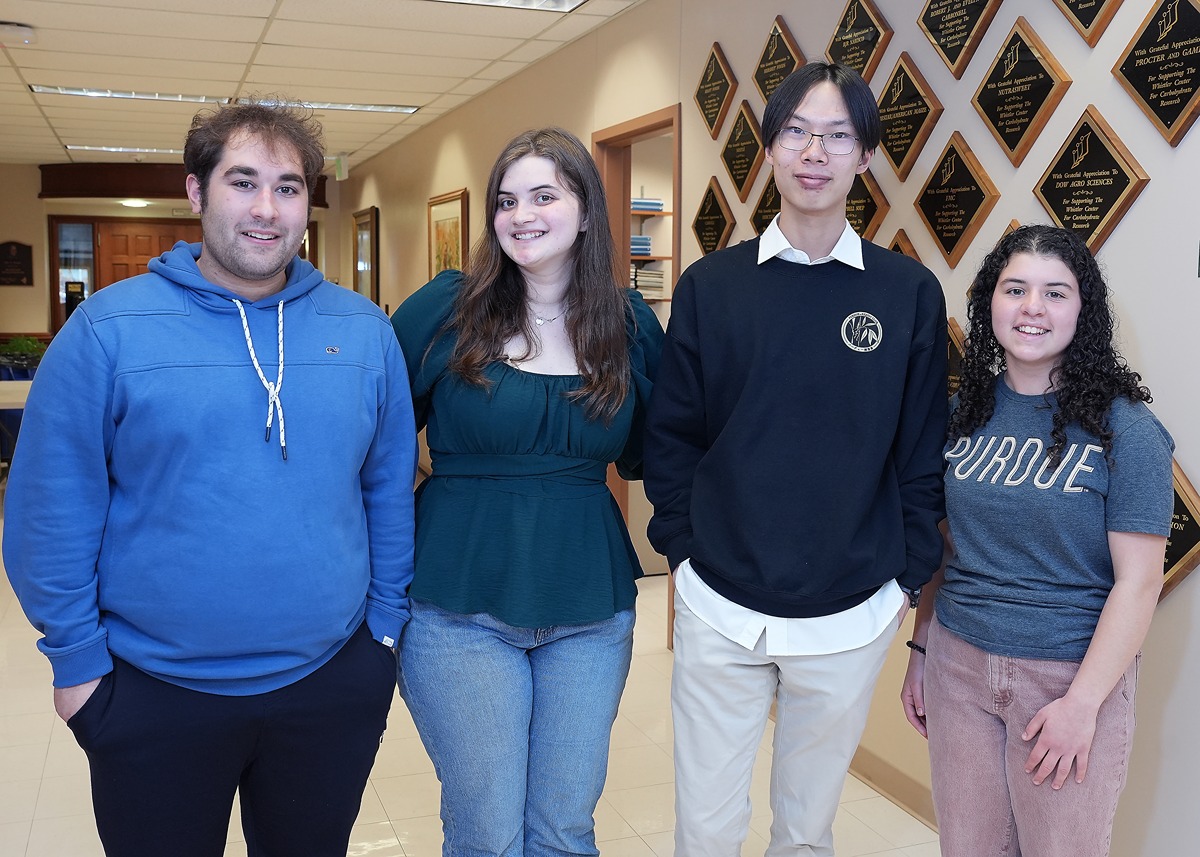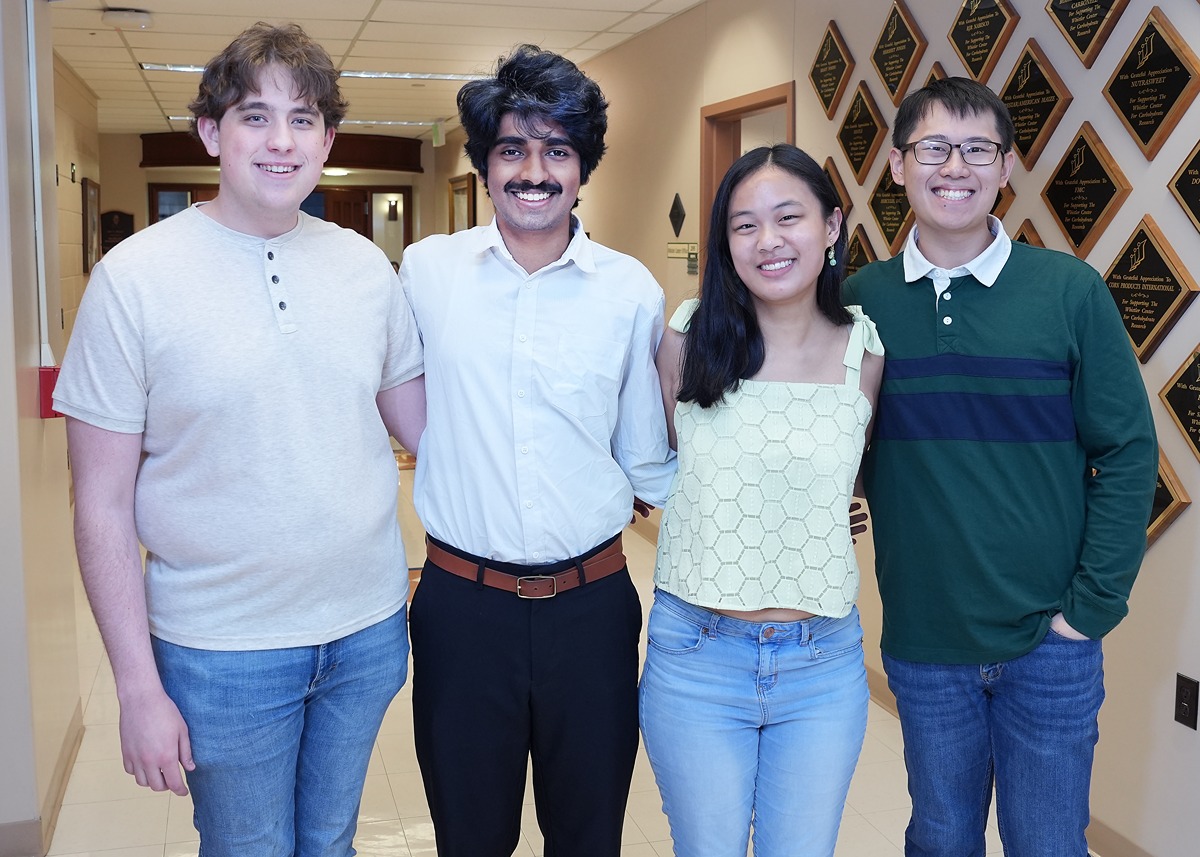The sweet (and spicy) taste of victory—National Honey Board funds a food science development competition at Purdue
Sweet, syrupy, golden liquid twirls over the end of grooves in wooden wands and into everything from yogurt to baklava to fresh, steaming sopaipillas. It’s no secret that honey is more than a spoonful of sugar, but the National Honey Board says that American consumers prefer it over any other sweetener on the market.
In the past few years, specialty sauces like hot honey combined the classic warm, sweet feeling with a bright, spicy kick and have taken over market trends. To encourage more innovation with America’s favorite sauce, Mike Caffee, external relations and career services coordinator within the Department of Food Science at Purdue, partnered with the National Honey Board to launch a competition for students to create honey condiments.
bright, spicy kick and have taken over market trends. To encourage more innovation with America’s favorite sauce, Mike Caffee, external relations and career services coordinator within the Department of Food Science at Purdue, partnered with the National Honey Board to launch a competition for students to create honey condiments.
Each of the 10 teams had to have at least one food science student on board, and several teams included students from across Purdue University. For example, agricultural and biological engineering major Siddharth Kumar, got involved after hearing about the competition through a friend’s Instagram. He joined another agricultural and biological engineering major, Alvin Cai, and two food science majors, Hayley Wong Liong and Sam Weber, to form the team “Ya like jazz?”
Team leader Wong Liong said, “We fermented our honey with garlic and we decided to combine that with gochujang, which is a red chili paste from Korea. We wanted something trendy, and K-pop music and Korean dramas are bringing in the soft powers from Korea. If so many people are being exposed to those foods, why not capitalize on the market?”
Her teammate Kumar added, “Fermenting the honey and garlic extracts more flavors, and it can change the color and viscosity, or thickness, of the sauce.”
Ya like jazz?’s gochujang honey sauce is designed with fried foods in mind. Whether it’s wings or vegetarian options like tofu, the umami flavors from the garlic honey and the heat from the red chili paste are sure to maximize the potential of every bite.
Graduate students were also welcomed to compete in the competition. Hansel Mina and Adriana Vanegas Torres, both PhD students in food safety and microbiology, are also labmates in Amanda Deering’s lab and named their team “Le parce” (translating to “The good friends”) as a testament to their shared Latin American heritage and friendship.
Mina and Vanegas created a multipurpose sauce that can be used as both a salad dressing and a meat marinade. Its flavor profile centers around passion fruit, a tropical purple fruit filled with black seeds and a tart, bright yellow pulp.
“With the honey, the passion fruit gives our sauce a sweet and acidic taste,” Mina said. “It tastes like Argentinian chimichurri with a touch of the tangy tropical fruit.”
Vanegas and Mina decided not to use any preservatives and relied on their training in food safety to use a heat treatment and bottling method to protect the sauce. They also brought in other challenging ingredients, like panela cane sugar that comes in the form of a brown block. They’d like to use Boiler Bee Honey from Purdue’s hives if they have the chance to go commercial. Though they were already friends, labmates Adriana Vanegas (left) and Hansel Mina (right) joined the competition to see what it would be like to work together to create something without the pressure of getting data and meeting deadlines. Their tangy sauce was inspired by Mina's upcoming work on passion fruit in Peru.
Though they were already friends, labmates Adriana Vanegas (left) and Hansel Mina (right) joined the competition to see what it would be like to work together to create something without the pressure of getting data and meeting deadlines. Their tangy sauce was inspired by Mina's upcoming work on passion fruit in Peru. While this experience was similar to their lab work together, they enjoyed having fun and experimenting without the pressure of data and deadlines. This competition also gave them ideas for their next steps after graduate school. As Mina prepares to take on a United States Agency for International Development grant in Peru aimed at adding value to their passion fruit crop with products much like the sauce he and Vanegas made, he knows this experience will benefit him long into the future.
Manya Kadiwala, a freshman in food science, reached out to coordinator Caffee to see if there was anyone else looking for a team. He connected her with a senior in her major, Melissa Suarez, and a PhD in food science, Anurag Pujari.
 Kadiwala said that differences in experience and age weren’t obstacles for their team, but instead markers of their success. “The learning part of this experience was the most exciting part for me. Working with a senior and a PhD student taught me many different factors to consider as I came up with ideas on this project, like how feasible things are in a time limit and what different people would think of certain products.”
Kadiwala said that differences in experience and age weren’t obstacles for their team, but instead markers of their success. “The learning part of this experience was the most exciting part for me. Working with a senior and a PhD student taught me many different factors to consider as I came up with ideas on this project, like how feasible things are in a time limit and what different people would think of certain products.”
Team “Aji chumbo” was born from valuing different perspectives. The namesake comes from Panama, where aji chumbo peppers are used to make a jam.
“I’m from Panama, and in Panama, we don’t eat spicy food. We have certain peppers we use to flavor food—just not for hotness,” Suarez said. “We have this jam called, ‘aji chombo jam,’ that we use to put on meats or crackers. It’s a perfect combination of sweet and heat.”
While aji chombo peppers are too difficult to get in the United States, the jam served as inspiration for their condiment development. They found a close match in habanero peppers and used fresh-squeezed orange juice and honey to mask the heat.
Teammate Pujari said, “The citrus here brings in more depth of flavor and can tenderize meat if it’s used in a marinade.”
The teams had to develop and create a new condiment in a couple months with a budget of $500. They also had to make a process flow chart about their operations, draw up ingredient and product labels and write a two-page essay on the health benefits of honey.
The teams presented their findings and final products to a panel of judges, including representatives on the National Honey Board and professors from food science and agricultural economics, on April 10. All the students retain their intellectual property rights and can take the project to patents and commercialization if they so choose.
Keith Seiz from the National Honey Board said, “I was so impressed and surprised by how all 10 teams made something completely different. Some had drawn on global flavors, others had interesting takes on classic condiments and still others came up with new kinds of products entirely.”
The next day, the winning three teams were announced in the Nelson Hall of Food Science in front of an audience of industry sponsors. Third place was given $2500, second $5000 and first $7500, awards that would be split evenly amongst each team’s individual members.
The team “Sweet Stingers,” composed of all freshmen in food science, took home third place for their garlic honey ranch.
“We wanted to do a twist on a midwestern classic, and our sauce makes a great dip for wings or a topping for pizza and salads,” said team member Ana Crane.
The group's leader Wong Liong said the biggest thing they had learned together from the competition was, “When you have a creative idea, you should always try it.”
After receiving the award and before walking out of Nelson Hall, team member Kumar expressed his gratitude towards Keith Seiz and the National Honey Board for sponsoring the competition. His teammate Cai agreed and told his team, “I’m just so glad I got to work with you all.”












